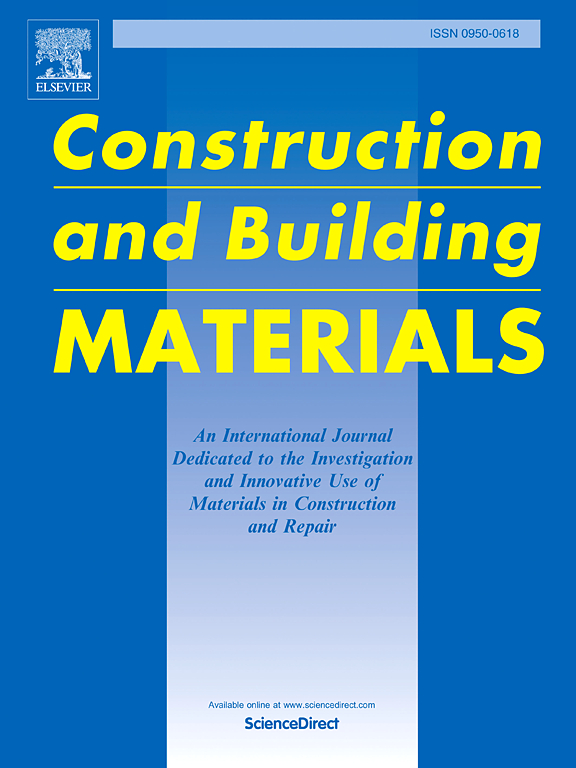Flexural property of eco-friendly timber beams strengthened with ECC layer
IF 7.4
1区 工程技术
Q1 CONSTRUCTION & BUILDING TECHNOLOGY
引用次数: 0
Abstract
This research presents a new engineering cement-based composite (ECC) reinforced timber beam structure to enhance the flexural bearing capacity and deformation capacity of eco-friendly timber beams. Nine test beams were tested under static load, and the test variables included steel plate setting, ECC reinforcement position and ECC layer thickness. The effects of test variables on the flexural property of ECC-reinforced timber beams were evaluated from the failure mode, load-deflection curve, ultimate load, stiffness, ductility and load-strain curve, indicating that the employment of ECC on strengthening timber beams is an effective reinforcement method for significantly improving the flexural bearing capacity and deformation capacity of timber beams. Compared with other reinforcement methods, the configuration of ECC layers at the top and bottom has a more notable effect on enhancing the flexural properties of timber beams. Compared with WB-1, the ultimate load, stiffness and displacement ductility coefficient of EWB-B10-T10 increased by 47.29 %, 92.17 % and 98.66 %, respectively. When the thickness of the ECC layer is the same, it is more effective to configure the ECC layer at the bottom than at the top; when the reinforcement position is the same, increasing the thickness of the ECC layer has a positive effect on the flexural performance of the beam. At the same time, a calculation model for the flexural bearing capacity of ECC-reinforced beams was proposed based on the hypothesis, and the flexural bearing capacity predicted by the calculation model is in good agreement with the test results. Finally, the CO2 emissions of the structure were calculated using the life cycle assessment method (LCA) and compared with other composite structures. This comprehensive evaluation highlights the environmental advantages of ECC-reinforced beams, and lays a solid foundation for future research and application in sustainable buildings.
求助全文
约1分钟内获得全文
求助全文
来源期刊

Construction and Building Materials
工程技术-材料科学:综合
CiteScore
13.80
自引率
21.60%
发文量
3632
审稿时长
82 days
期刊介绍:
Construction and Building Materials offers an international platform for sharing innovative and original research and development in the realm of construction and building materials, along with their practical applications in new projects and repair practices. The journal publishes a diverse array of pioneering research and application papers, detailing laboratory investigations and, to a limited extent, numerical analyses or reports on full-scale projects. Multi-part papers are discouraged.
Additionally, Construction and Building Materials features comprehensive case studies and insightful review articles that contribute to new insights in the field. Our focus is on papers related to construction materials, excluding those on structural engineering, geotechnics, and unbound highway layers. Covered materials and technologies encompass cement, concrete reinforcement, bricks and mortars, additives, corrosion technology, ceramics, timber, steel, polymers, glass fibers, recycled materials, bamboo, rammed earth, non-conventional building materials, bituminous materials, and applications in railway materials.
 求助内容:
求助内容: 应助结果提醒方式:
应助结果提醒方式:


